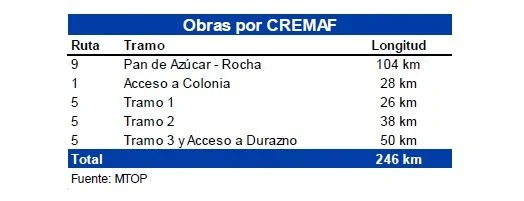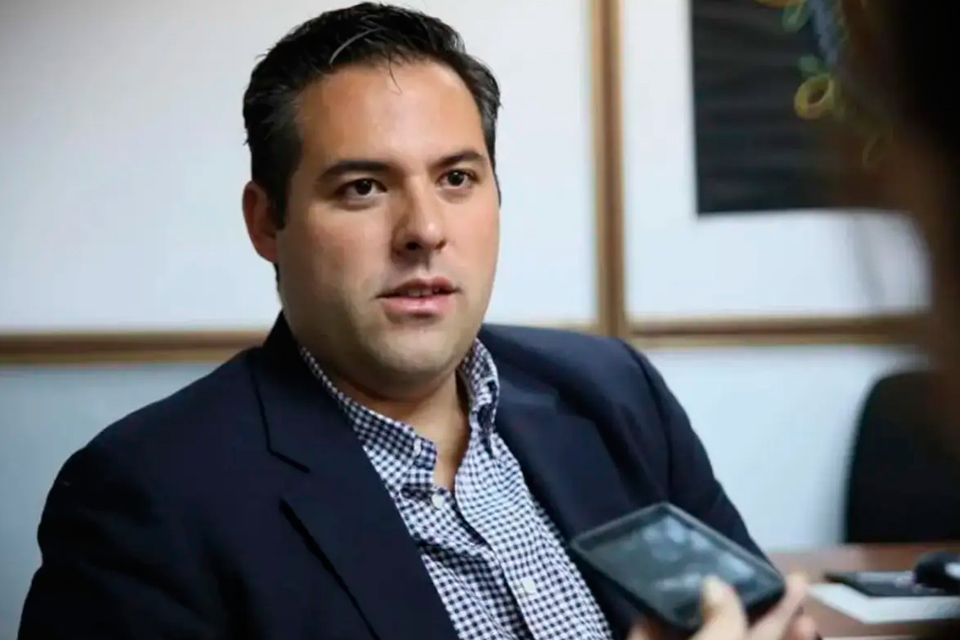“The largest construction plan in recent times”, was read on the screen of the auditorium of the Executive Tower annex, where on Tuesday afternoon the government presented details of the road infrastructure plan for the five-year period.
In just over an hour the figures abounded. In 2022 there will be investments of US$ 905 million, equivalent to US$ 2.5 million of investment per day. Throughout the five-year period, 7,692 km of the 8,833 km that make up the current network will have had some type of intervention. 81% of national routes will have works underway in this period. that will demand an investment of US$ 3,500 million throughout the period.
There will be 4,440 kilometers with pavement recovery and 2,600 kilometers will have a change in standard, going from bitumen to asphalt mixture or concrete, with a durability of 7 to 10 years, without the need to be intervened again. The Ministry of Transport will carry out 642 kilometers of new works, another 342 kilometers to reach “zero ballast” throughout the territory, in addition to 227 bridges, in addition to 100 new roundabouts, 10 interchanges and third roads, among other works.
The PPPs come out, the Cremafs come in
A key tool that the government is using to carry out works through the Uruguayan Road Corporation (CVU) are the Rehabilitation, Maintenance and Financing Contracts (Cremaf). Under this modality, US$ 507 million are expected to be executed until 2024.
Among these works, the construction of the double lane of routes 1, 5 and 9 stands out, which implies an improvement in the connectivity of these corridors in terms of safety and fluidity in routes where the transport of goods, domestic displacement and the main tourist destinations, according to the authorities.
This tool is also a substitute for Public Private Partnership contracts (PPP), which the director of the Planning and Budget Office (OPP) Issac Alfie, redefined as “too expensive” and “little operational”.
Alfie reviewed numbers in detail, and concluded that in the seven road corridors already awarded by PPP, US$ 1,050 million could have been saved over 20 years.
The economist also highlighted that among some of the objectives that were set at the time of looking for new alternatives to carry out road works were those of being able to increase competition between companies through smaller sections, distribute risks in a “more efficient” way, and reduce transactional and financial costs, as well as bidding and construction times.

The Cremaf contracts imply the completion of the work in two years, the subsequent maintenance and the repayment in 10 years.. In the government they maintain that the mechanism has the advantage of being “more agile and simple” than that of the PPPs and supposes, on the one hand, a fixed payment (through irrevocable payment certificates) and on the other, availability payments associated with the availability and compliance with service levels during the maintenance stage. Both payments are made after 10 years of the maintenance concession.
The Minister of Transport, José Luis Falero, affirmed that although it was said that it was “impossible” to issue a bidding document in less than a year in the State, now it has been possible to “reverse that situation” and have ready bidding documents in four months to be able to extend the bidding quickly. “It was possible, what was missing was better articulation in the State,” he said.
He also highlighted the “enthusiasm” found in the financial system to accompany the investment process that Uruguay needs. They have viewed the new Cremaf contract very favorably”, he highlighted.
“Here it is not about refounding, it is about using what was in progress, not let it fall, activate it and incorporate new systems that allow us to do more by better managing resources”, added the minister. In another part of his presentation, Falero stressed that the idea of ”investing well in quality works” that allow having “certainty of durability is being fulfilled to the letter.”
The role of CVU
The president of the National Development Corporation (CND), José Luis Puig explained that CVU has a road plan underway within five years for $1,806 millionjust over 60% of the total MTOP works plan.
The CVU manages the maintenance and renovation works of the concession network, which includes the international corridors (routes 1, 2, 3, 5, 8, 9, 10, 11, 12, 17, 18, 23, 93, 99, 101 , 102 and the interbalnearia route), as well as works on routes located outside the concession network.
During the year 2021, an extension of the original contract was agreed until 2051, incorporating the duplication of routes already belonging to the concessioned mesh (sections of routes 1, 5 and 9) and also route 26, which will imply the extension of the network road under concession from the current 2,636 km to approximately 3,400 km, according to the Accountability project.
In addition, CVU will be in charge of executing the works aimed at conditioning 38 bridges on routes 2, 3, 5 and 20, and the bypass and interconnection with Paso de los Toros linked to the new cellulose pulp manufacturing plant. in the center of the country. It will also participate in Route 6, which will be executed through different management or financing modalities.

















